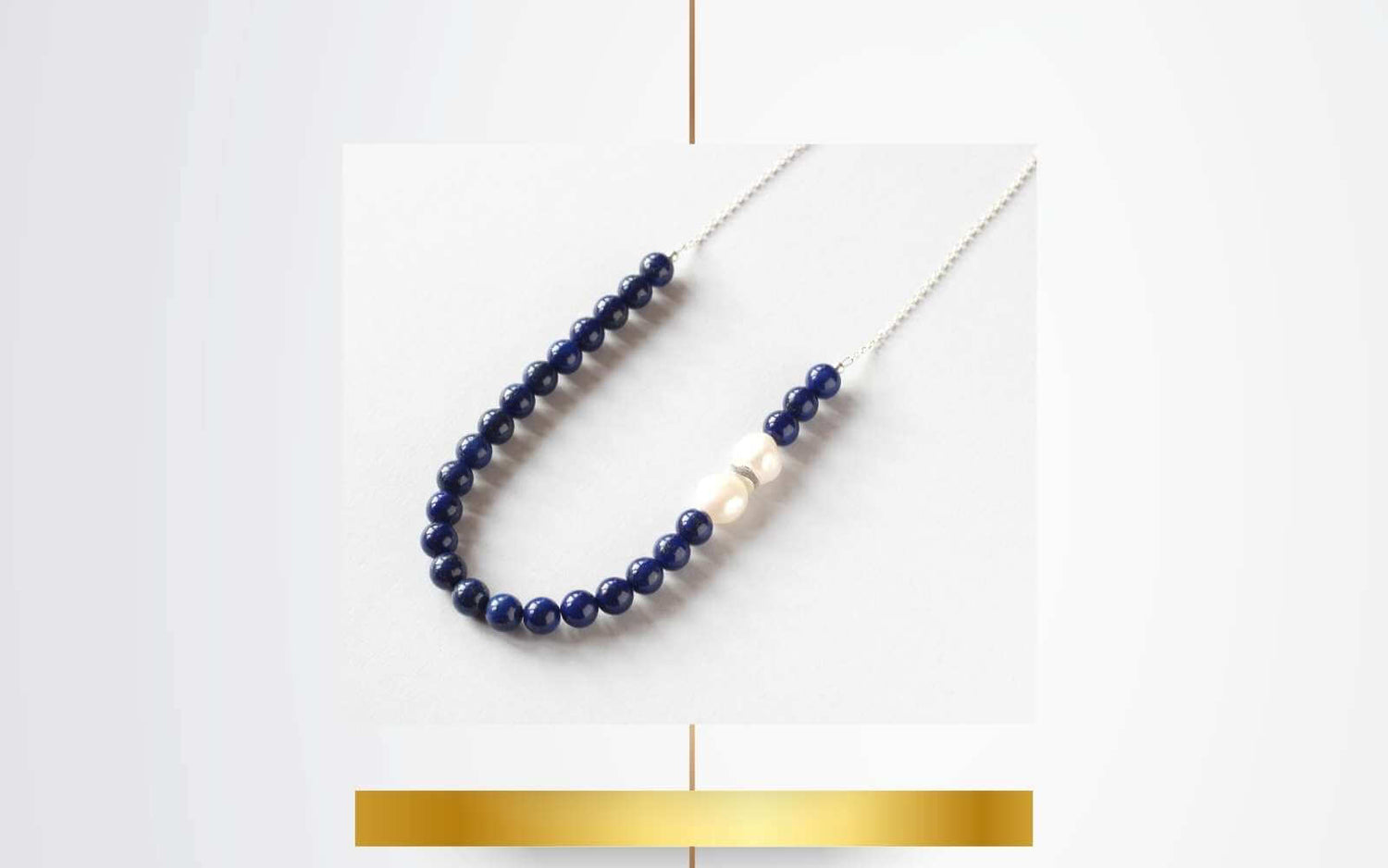
September Birthstone - A Complete Guide
Lapis Lazuli September Birthstone
Lapis Lazuli is a semi-precious gemstone and the September birthstone. It is an alternative to its precious cousin Sapphire, also known as the main birthstone for September. It is the gemstone of the sky and a curious name. Lapis Lazuli was admired, desired and highly valued by ancient cultures. Its deep, sacred blue remains the symbol of kings and honour, queens and power, spirit and vision. This September birthstone is a worldwide symbol of wisdom and truth.
The appearance of Lapis Lazuli
Lapis Lazuli is a blue metamorphic rock that has been used by people for centuries. Uses include as a gemstone, sculpting substance, pigment, and ornate material. The September birthstone is a rock made of three minerals. Lazurite is the most notable of these. Lazurite forms the bulk of a Lapis rock and is also responsible for the gemstone’s deep blue colour. In addition, to be called "Lapis Lazuli", a rock must have a distinctive blue colour. It must contain at least 25% blue lazurite. There are two more important mineral components of Lapis. Pyrites make speckles of yellow. Calcite adds white intrusions.
The intense blue colour is the most important quality of the Lapis Lazuli gemstone. The most preferred pieces have a rich, solid blue colour. Reflective pieces of gold pyrite add a new colour dimension. Lapis is semi-translucent to opaque, with a waxy to vitreous lustre. Its colour ranges from deep violet-blue and royal blue to light blue. A turquoise hue and a greenish blue add to the range. The mixture of different minerals in the aggregate consequently determines the colour.
Hardness and Deposits of Lapis Lazuli
Lapis Lazuli is a rock and is composed of several minerals. For that reason, the hardness of each mineral has to be taken into account. As a result, Lapis has fair toughness and its hardness ranges from 5 to 6 on the Mohs scale. This depends on the mix of minerals. The Afghan region has been the world’s most important source of Lapis for thousands of years. The Northern Afghan area of Badakhshan is where the world's finest Lapis Lazuli comes from. The same mines working today also supplied Lapis to the pharaohs. However, Lapis has also been found in Chile, Russia, Canada, Pakistan, Argentina, and the USA.
History of September Birthstone
Lapis lazuli is one of the oldest gemstones used in history. Its use dates back 6500 years. It was employed for several uses. The use of Lapis for art and jewel making began in the Afghan region. It subsequently spread to Asia, the Middle East, and also the Roman world. Ancient cultures valued its vivid, exquisite colour. It was prized as much as other blue gemstones like sapphire and turquoise. They wore this September birthstone as both jewellery and an amulet. It was also used as a cosmetic eye shadow, a pigment, and a medicine. Sculptures of Egypt's pharaohs had their eyebrows or irises coloured by it. Cleopatra also used powdered Lapis for her eye shadow. Beautiful Egyptian amulets and jewels made from Lapis Lazuli were found in the tomb of the Egyptian Pharaoh King Tutankhamun.
It was also noted in the Old Testament as Sapphire. This was unknown at the time as Lapis Lazuli was incorrectly named Sapphire. Lapis is most likely the fifth stone in the breastplate of the High Priest. Marco Polo wrote about the Lapis Lazuli mines way back in 1271.
In the Middle Ages, Lapis powder was made into a pigment known as ultramarine. At that time it was more precious than gold. This striking pigment subsequently helped to create some of the most stunning paintings in history. The ceiling of the Sistine Chapel was painted with it. Some of the major artists of the Renaissance used it. It was also known as one of Michelangelo’s favoured colours.
Origin of Name
The two-part name of this September birthstone comes from two distinct languages. Lapis is a Latin word meaning "stone". Lazuli comes from the Persian word lazhuward, meaning "blue". Many people refer to this gemstone simply as “Lapis”.
Healing Properties of Lapis Lazuli
Lapis Lazuli is one of the oldest known sacred gemstones. It has been used by healers, priests and also royalty. Power is linked with this precious stone as well as wisdom and psychic powers. Since the earliest of times, Lapis has been linked with strength. Courage, royalty and wisdom are also associated with Lapis usage. The Ancient Egyptians and Mesopotamians prised Lapis and called it the "Stone of Rulers". It was thought to bring wisdom, and truth and reveal our inner insight. The September birthstone inspires the honesty of the spirit in the spoken and written word. It is a useful gemstone to wear as it is said to relieve anger and bleak thoughts.
How to Care for Lapis Lazuli Jewellery
Lapis Lazuli has an excellent polish and has been widely used in jewel making. With a hardness of 5-6, it sits in the middle of the Mohs hardness scale. As a result, it is harder than other favoured gemstones yet softer than many clear ones. Lapis is also sensitive to pressure, heat and household cleaners and abrasives.
You can effectively clean your September birthstone jewellery with a soft brush. Mild soap is useful but it is not wise to let it sit in water. Avoid machine cleanings, such as steam or ultrasonic systems and chemical solvents.
How to Wear September Birthstone
Blue represents thoughtful journeys and signifies wisdom and depth of perception. It is the colour of strength and trust, unity, and command. Blue is a favoured colour by many people.
When pairing Lapis Lazuli jewellery, a winning union can be achieved by matching it with purple or turquoise colours. If you would like to achieve a more striking look, red or orange would be a decent choice. This September birthstone has either a white or yellow matrix or feathering through it which makes it versatile. For that reason, it will match silver and gold equally well. All types of this gemstone make good combinations with neutral colours. For a truly summery look match your Lapis Lazuli piece of jewellery with a white top or a dress. This simple yet striking combination will draw notable attention.
Lapis Lazuli makes a good choice for men’s jewellery because of its rich blue colour. Blue is one of men's favourite colours and it should be easy to colour coordinate with their clothes.
Browse Our Lapis Lazuli Jewellery
Discover what birthstones you can wear for other months in our "Birthstones by the Month" blog post.
References:
“Crystal Power, Crystal Healing” Michael Gienger






